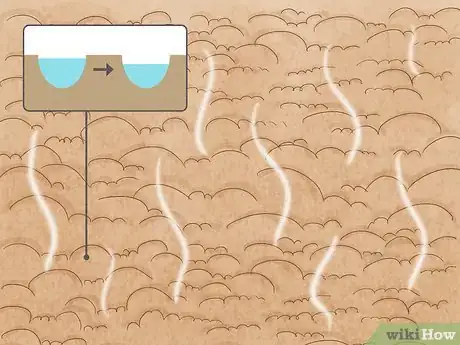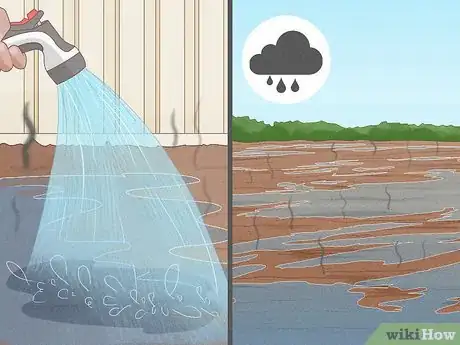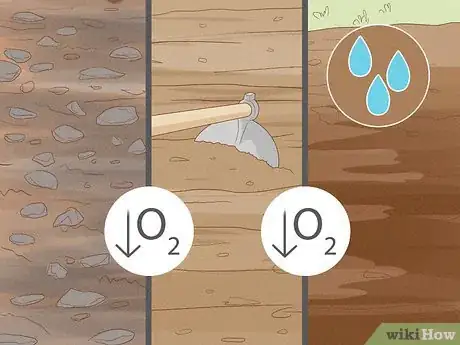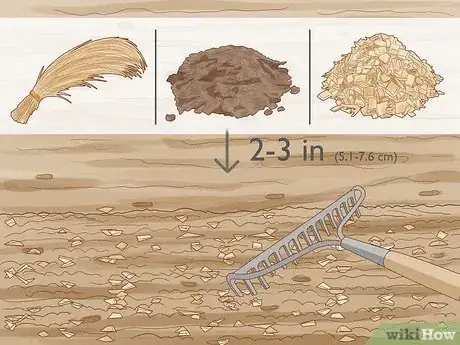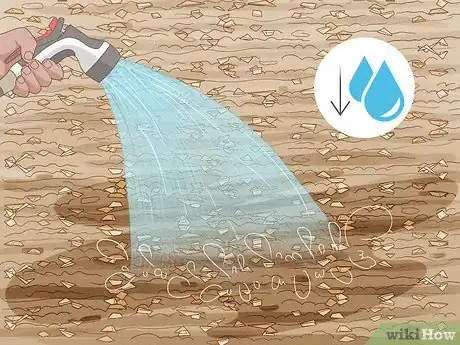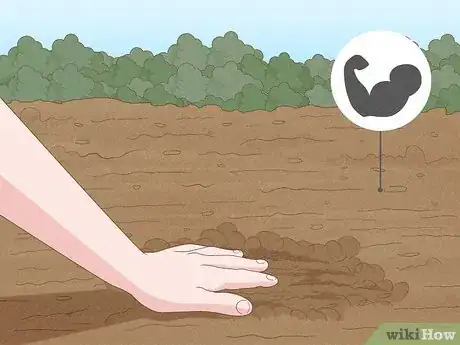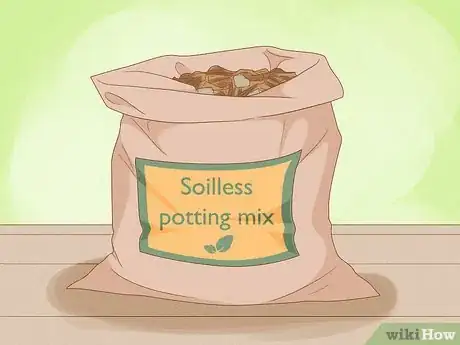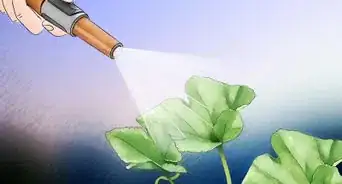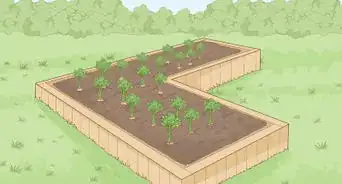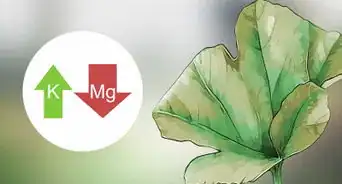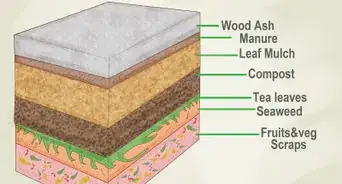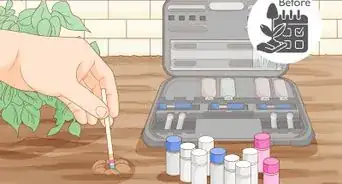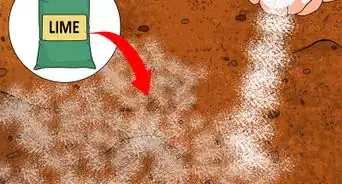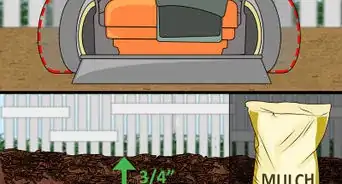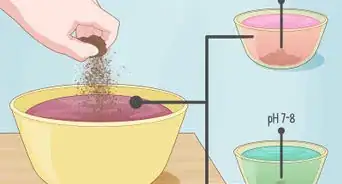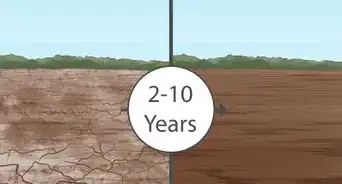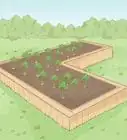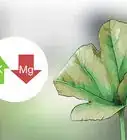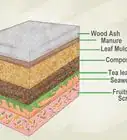This article was co-authored by Lindsey Swett and by wikiHow staff writer, Amber Crain. Lindsey Swett is a Plant Specialist and the Owner of Niche Plant Shop in Boston, Massachusetts. She has over a decade of experience working in several plant settings, including golf courses, public parks, and commercial garden centers. Her focus now is on helping plant owners care for their indoor plants. Lindsey holds a Master of Landscape Architecture from The University of Michigan.
There are 16 references cited in this article, which can be found at the bottom of the page.
This article has been viewed 13,410 times.
If you've noticed a sharp, ammonia-like odor coming from your soil, you're probably wondering what could possibly cause such a thing. Don't worry—this is a common gardening issue and it's something you can fix on your own! In this article, we'll be answering your most common questions about soil that doesn't smell quite right. We'll also explain how to get rid of that funky odor and improve the health of your soil.
Steps
What causes soil to smell like ammonia?
-
1Soil with poor drainage often develops an ammonia smell. If soil doesn't drain well, it can quickly become saturated with water. Saturated soil is often dark in color and the perfect breeding ground for anaerobic bacteria, and this often leads to a funky ammonia smell.[1]
- To test the drainage in your garden, dig a 12x12x12 in (30x30x30 cm) hole and fill it with water. If the water drains completely in 3 hours or less, your soil has good drainage and the ammonia smell is likely being caused by something else.[2]
-
2Overwatering or getting a lot of rain can make soil smell like ammonia. Soil with decent drainage can still become waterlogged and stinky if too much water is introduced. If your soil never gets a chance to dry out, it can develop an ammonia-like odor.[3]Advertisement
-
3A lack of oxygen can make your soil smell like ammonia. Soil that lacks a healthy amount of oxygen is called “anaerobic” soil. A lack of oxygen can cause several problems, all of which can contribute to soil odor.[4] Anaerobic soil usually has one (or all) of the following characteristics:
- Heavy, sticky, or gray in color, indicating a large amount of clay is present
- Hard, dense, and difficult to turn or till, indicating soil compaction
- Waterlogged and consistently wet, indicating poor soil drainage[5]
How do I fix soil that smells like ammonia?
-
1Add organic amendments to improve drainage or aerate compacted soil. Fibrous organic amendments like peat, wood chips, tree bark, and straw are most effective for soils that are heavy, dense, or waterlogged.[6] Start by spreading a 2–3 in (5.1–7.6 cm) layer of your chosen amendment over the soil’s surface. Then, mix it into the soil using a tiller, shovel, or digging fork. Ideally, amend your soil 3-6 weeks before you start planting.[7]
-
2Water less often if drainage is fine and the soil isn't compacted. If the soil itself is fine, back off on how often you water it. In general, aim to provide 4 in (10 cm) of water every 8 days.[10] If you have plants growing in the soil already, their roots will soak up water faster, so you may need to water more often. It helps to experiment by doing things like:
- Digging a 12x12x12 in (30x30x30 cm) hole before watering. If the soil is visibly wet, hold off on watering for a few days.
- Filling the hole with water to check the drainage. If the water isn't absorbed in 3 hours or less, it's waterlogged. Don't water your soil yet.[11]
- Using a rain gauge in wet climates. Just stick the gauge into the soil and check the reading periodically to figure out when you need to add more water to the soil.[12]
Why does my potted plant smell like ammonia?
-
1Potted plants may smell like ammonia if you're watering them too often. Waterlogged soil is a breeding ground for anaerobic bacteria which is a leading cause of soil odor. Performing a simple touch test every day can help you avoid overwatering container plants.[14]
- To do this, stick your finger into the top 1 in (2.5 cm) of soil. If the soil feels damp, don't water your plant yet. Wait until the soil feels dry to the touch before watering again.
-
2Using pots with poor drainage can cause an ammonia odor to develop. Check the bottom of each potted plant to make sure there are drainage holes. If the pot doesn’t have any drainage holes, or if the holes are really small, water isn’t able to drain through properly. This leads to foul odors and can cause diseases like root rot.[15]
-
3Using dense potting soil can make potted plants smell like ammonia. Avoid using regular garden soil or other dense soil mixes for your container plants. Lightweight potting mixes work best for potted plants because they stay loose (so they don’t get compacted over time) and they drain well (which prevents oversaturation).[16]
How do I fix a smelly potted plant?
-
1Replant it in an all-purpose, lightweight potting mix. Look for a soilless potting mix made of peat moss, vermiculite, and/or perlite. Soilless potting mixes are lightweight, porous, and perfect for growing container plants.[17] You can even make your own soilless mix by combining equal parts peat moss and vermiculite (or perlite).[18]
-
2Use a pot with more drainage holes. Choose a container that has drainage holes on the bottom or sides. If the drainage holes are on the bottom of the container, remember to position your potted plant so it’s slightly elevated off the ground to allow for proper drainage. If the container must sit directly on the ground (or any other flat surface like a table or shelf), it needs to have drainage holes on the sides (rather than the bottom).[19]
- If you don’t want to repot your plants, you can also drill extra drainage holes into the bottom or sides of the container.
References
- ↑ http://compost.css.cornell.edu/odors/ammonia.html
- ↑ https://agrilife.org/treecarekit/tree-identification-selection/identification-of-and-corrective-action-for-poorly-drained-soils-in-the-landscape/
- ↑ https://aggie-horticulture.tamu.edu/earthkind/landscape/dont-bag-it/chapter-1-the-decomposition-process/
- ↑ https://ohioline.osu.edu/factsheet/SAG-19
- ↑ https://hort.ifas.ufl.edu/woody/poor-soil.shtml
- ↑ https://sswm.info/sites/default/files/reference_attachments/DAVIS%20and%20WILSON%202005%20Choosing%20a%20Soil%20Amendment.pdf
- ↑ https://gardeningsolutions.ifas.ufl.edu/care/fertilizer/organic-matter.html
- ↑ https://agrilife.org/treecarekit/tree-identification-selection/identification-of-and-corrective-action-for-poorly-drained-soils-in-the-landscape/
- ↑ https://www.purdue.edu/hla/sites/yardandgarden/resist-the-urge-to-work-wet-soil/
- ↑ https://extension.oregonstate.edu/news/soil-texture-determines-how-much-how-often-water
- ↑ https://agrilife.org/treecarekit/tree-identification-selection/identification-of-and-corrective-action-for-poorly-drained-soils-in-the-landscape/
- ↑ https://apnews.com/article/gardening-lifestyle-3f8e1f54509e989b68e3e4bd3f022157
- ↑ https://www.nrcs.usda.gov/wps/portal/nrcs/detail/ky/soils/health/?cid=nrcseprd376407
- ↑ https://mgsantaclara.ucanr.edu/garden-help/container-gardening/#watering_for_containers
- ↑ https://content.ces.ncsu.edu/extension-gardener-handbook/18-plants-grown-in-containers
- ↑ http://chemung.cce.cornell.edu/resources/container-gardening
- ↑ http://chemung.cce.cornell.edu/resources/container-gardening
- ↑ https://extension.psu.edu/homemade-potting-media
- ↑ http://chemung.cce.cornell.edu/resources/container-gardening
- ↑ https://soiltest.uconn.edu/factsheet_5_949296652.pdf
